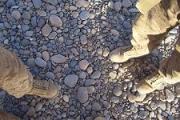...CALL now has a POC in EVERY installation whose sole job is to find information at the request of users in CALL's database. It's the COIN L2I program. Soldier can say "I want everything on Detainee ops for a PLT" and within 48 hours call will send it to them.
If the line isn't getting it in today's information environment, it isn't because the Army hasn't led the horse to the water.
The larger issue is one of willingness. I was a heavy user of Company Command and LOGNET forums. Both allowed me to tap into the expertise of peers and experts in fields. I was a much, much more effective commander because of Company Command. Want some creative ideas on rewarding soldiers? It's there. Want a good supply room SOP? It's there. Want creative ways to train house clearing training? it's there. Have a question? Your peers and those who have gone before will answer it in a few hours. I saved countless hours because I was willing to read and learn from those who have gone before.
However, out of 13 company commanders in my BCT, I was the only one active on that site. Whenever I found something good, I passed it on to my peers. But it just amazed me that they were unwilling to utilize a resource that would make them tremendously more effective at leading soldiers. The lick is on them, not the Army.






 I told him the same before he came and posted here. Even the TTP is useful - but he reflects a lot of what I see everyday - officers (at all grades) don't generally understand the difference between counter-guerrilla and counter-insurgency. I hear C-IED, SKT, C-Sniper, E2S, etc. described as "COIN" all the time. Houston, we have an education problem.
I told him the same before he came and posted here. Even the TTP is useful - but he reflects a lot of what I see everyday - officers (at all grades) don't generally understand the difference between counter-guerrilla and counter-insurgency. I hear C-IED, SKT, C-Sniper, E2S, etc. described as "COIN" all the time. Houston, we have an education problem. 
 "A Sherman can give you a very nice... edge."- Oddball,
"A Sherman can give you a very nice... edge."- Oddball,  ).
).






 ).
).

Bookmarks